
Chapter 4Chapter 4
Tide and tidal currents Tide and tidal currents
NộiNội dungdung
1. 1. ThuËtThuËt ngng÷÷ thiªnthiªn vv¨¨nn vµ vµ thuûthuû vv¨¨nn
2. 2. LùcLùc t¹o t¹o triÒutriÒu
3. 3. Ph©nPh©n tÝchtÝch thuûthuû triÒutriÒu
4. 4. DùDù b¸ob¸o triÒutriÒu
5. 5. ThuûThuû triÒutriÒu BiÓnBiÓn ®«®«ngng
6. 6. CöaCöa s«ngs«ng vµ vµ thuûthuû triÒutriÒu vïngvïng cöacöa s«ngs«ng
7. 7. BµiBµi tËptËp

ThuËtThuËt ngng÷÷ thiªnthiªn vv¨¨nn
ThiªnThiªn cÇucÇu hay hay mÆtmÆt cÇucÇu bÇubÇu trêitrêi
TrôcTrôc vòvò trôtrô
ThiªnThiªn cùccùc b¾cb¾c vµ vµ thiªnthiªn cùccùc namnam
ThiªnThiªn ®®ØnhØnh vµ vµ thiªnthiªn ®Õ®Õ
MÆtMÆt ph¼ng ph¼ng ch©nch©n trêitrêi
§§--êngêng ch©nch©n trêitrêi, , xíchxích đạođạo trờitrời..
ThiªnThiªn cÇucÇu b¾cb¾c vµ vµ thiªnthiªn cÇucÇu namnam..
KinhKinh tuyÕntuyÕn trêitrêi..
§§iÓmiÓm b¾cb¾c vµ vµ ®®iÓmiÓm namnam, , ®®iÓmiÓm ®«®«ngng vµ vµ ®®iÓmiÓm t©yt©y..
VßngVßng giêgiê,, vßngvßng nhËtnhËt ®®éngéng. . VßngVßng hoµnghoµng ®¹o,®¹o, b¹ch ®¹ob¹ch ®¹o. .
Xu©nXu©n ph©nph©n (21/III),(21/III),thuthu ph©nph©n (23/IX),(23/IX),h¹ h¹ chÝchÝ (22/VI), (22/VI), ®«®«ngng chÝchÝ (22/XII). (22/XII).
NgµyNgµy sãcsãc th-îngth-îng huyÒnhuyÒn , , ngµyngµy vängväng h¹ h¹ huyÒnhuyÒn ..
ThuËtThuËt ngng÷÷ thuûthuû vv¨¨nn
-§Ønh triÒu
-Ch©n triÒu
-Chu kú triÒu
-§é lín thuû triÒu
-Biªn ®é triÒu
- Tr, Td
- Kú n- íc c- êng, kú n- íc kÐm
-“0 lôc ®Þa” , “0 ®é s©u”

Tidal CharacteristicsTidal Characteristics
single waves single waves -- stretch across entire stretch across entire
ocean basins. ocean basins.
shallowshallow--waterwater waveswaves
–– wavelengths greatly exceed the depth of wavelengths greatly exceed the depth of
the ocean.the ocean.
complex interactions of complex interactions of moon and moon and
sunsun

AquacultureAquaculture


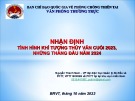

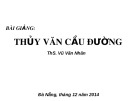
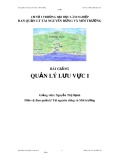




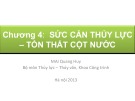
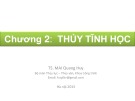










![Quy hoạch tổng thể Cà Mau: Tài liệu [mới nhất/chuẩn nhất]](https://cdn.tailieu.vn/images/document/thumbnail/2025/20250827/tghong1621@gmail.com/135x160/49401756278390.jpg)


![Bài giảng Hàng hải địa văn [chuẩn nhất]](https://cdn.tailieu.vn/images/document/thumbnail/2025/20250729/vijiraiya/135x160/43361753782101.jpg)
![Bài giảng Trắc địa cơ sở [mới nhất]](https://cdn.tailieu.vn/images/document/thumbnail/2025/20250729/vijiraiya/135x160/84_bai-giang-trac-dia-co-so.jpg)
